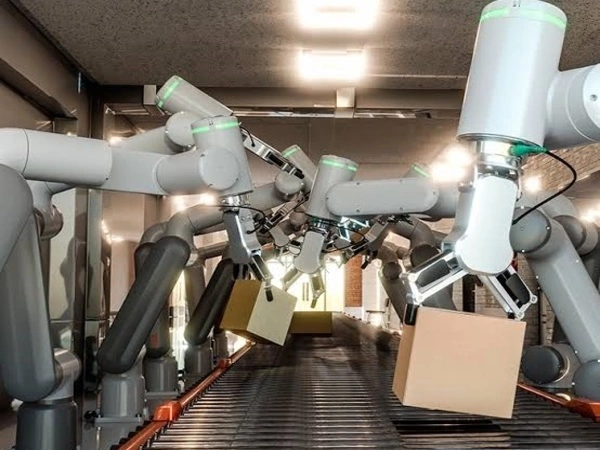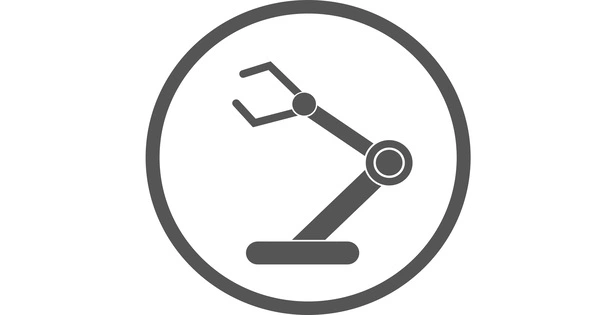The purchase, installation, and integration of robots and automation technology might require considerable upfront costs. These expenses might place a burden on a company’s finances in the near term, potentially leading to lower profits in the beginning. Robots, according to researchers, can have a ‘U-shaped’ influence on profitability, leading profit margins to dip at first before climbing again.
The University of Cambridge researchers analysed industrial data from the UK and 24 other European countries between 1995 and 2017 and discovered that at low levels of adoption, robots have a detrimental impact on profit margins. However, with higher levels of usage, robots can assist in increasing revenues.
According to the experts, this U-shaped phenomena is caused by the link between cost reduction, process development, and product innovation. While many companies initially use robotic technologies to reduce costs, this ‘process innovation’ is easily replicated by competitors, therefore at low levels of robot adoption, corporations are focused on their competitors rather than inventing new products. However, if adoption rates rise and robots become fully integrated into a company’s processes, the technology can be utilized to boost income by developing new goods.
We wanted to know if companies were using robots to improve internal processes rather than the overall business model. Profit margin can be a good way to look at this.
Dr. Philip Chen
In other words, organizations that use robots are likely to start by optimizing their operations before changing their focus to product innovation, which gives them greater market power by allowing them to differentiate themselves from their competitors. The findings have been published in the journal IEEE Transactions on Engineering Management.
Since the 1980s, robots have been widely utilized in industry, particularly in industries where they can do physically demanding, repetitive activities, such as automotive assembly. Since then, the rate of robot adoption has risen substantially and regularly over the world, and the development of precise, electrically controlled robots has made them especially effective for high-value manufacturing applications needing greater precision, such as electronics.
While robots have been shown to reliably raise labour productivity at an industry or country level, what has been less studied is how robots affect profit margins at a similar macro scale.

“If you look at how the introduction of computers affected productivity, you actually see a slowdown in productivity growth in the 1970s and early 1980s, before productivity starts to rise again, which it did until the financial crisis of 2008,” co-author Professor Chander Velu of Cambridge’s Institute for Manufacturing said. “It’s interesting that a tool designed to boost productivity had the opposite effect, at least initially. We were curious if there was a comparable pattern in robotics.”
“We wanted to know if companies were using robots to improve internal processes rather than the overall business model,” stated co-author Dr. Philip Chen. “Profit margin can be a good way to look at this.”
Between 1995 and 2017, the researchers reviewed industry-level data for 25 EU countries (including the UK, which was a member at the time). While the data did not allow the researchers to dive down to the level of individual organizations, they were able to examine entire industries, particularly manufacturing, where robots are often used.
The researchers then gathered robotics data from the database of the International Federation of Robotics (IFR). They were able to analyze the influence of robotics on profit margins at the country level by comparing the two sets of data.
“Intuitively, we thought that more robotic technologies would lead to higher profit margins, but the fact that we see this U-shaped curve instead was surprising,” said Chen.
“Initially, firms are adopting robots to create a competitive advantage by lowering costs,” said Velu. “But process innovation is cheap to copy, and competitors will also adopt robots if it helps them make their products more cheaply. This then starts to squeeze margins and reduce profit margin.”
The researchers then carried out a series of interviews with an American medical equipment manufacturer to study their experiences with robot adoption.
“We found that it’s not easy to adopt robotics into a business — it costs a lot of money to streamline and automate processes,” said Chen.
“When you start introducing more and more robots into your process, you eventually reach a point where your entire process needs to be redesigned from the ground up,” Velu explained. “It’s critical that companies develop new processes concurrently with the incorporation of robots, or they will reach the same pinch point.”
According to the experts, if businesses wish to reach the profitable side of the U-shaped curve faster, the business strategy must be altered concurrently with robot adoption. Only after robots have been fully integrated into the business model will companies be able to fully leverage the power of robotics to produce new products and drive profitability.
















